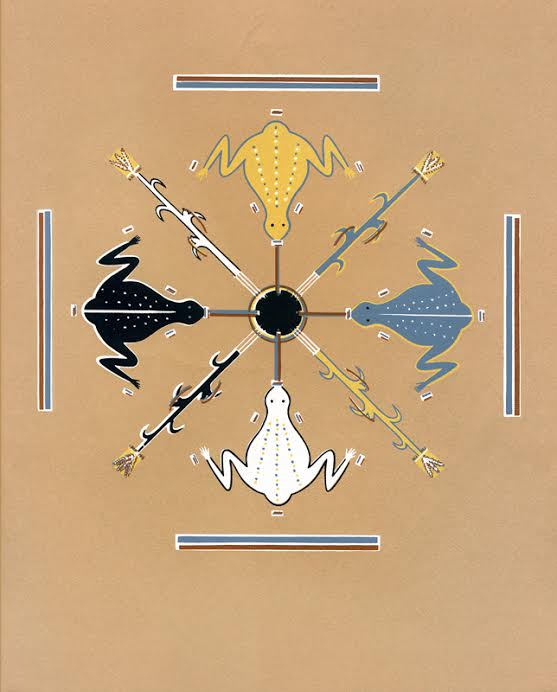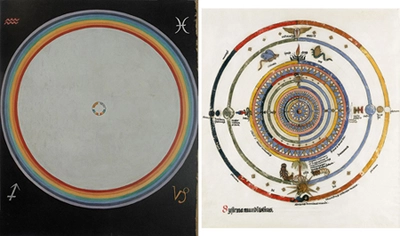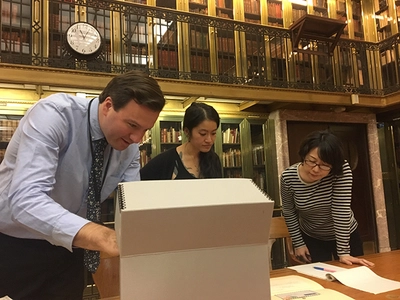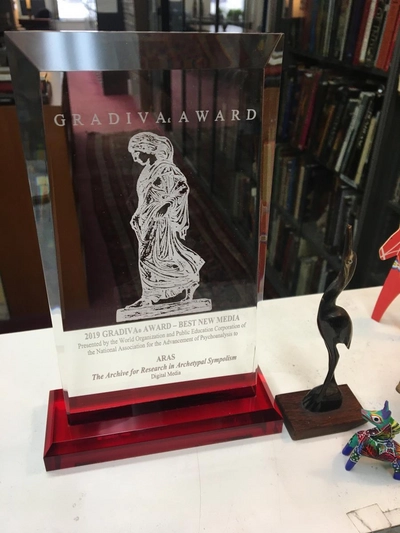ARAS Connections: Image and Archetype - 2019 Issue 4

It is hard to believe that we published the first issue of ARAS Connections in 2006. This is our fifty-sixth issue over the past thirteen years and it is with great pride that we announce that ARAS Connections has been chosen the winner of the 2019 Gradiva Award in the category of Best Digital Media. As our wonderful long-time curator, Ami Ronnberg, announces below, we were both shocked and thrilled to learn of this award from the National Association for the Advancement of Psychoanalysis (NAAP). It seems timely to give a bit of history and context for our publication and this award. At the outset, we wanted to create a journal that was not too academic but also was quite serious in intent and content. We wanted it to be accessible to both a professional and lay audience. Most importantly, we wanted to take risks with articles that reflect a grounding in symbolic imagery with a cross cultural and multi-disciplinary focus. We knew that we had a unique opportunity for creating a distinctive periodical in that the combination of the digital format of ARAS Connections and our National ARAS status as a nonprofit would allow us to publish images under the so-called fair use law which grants exemptions from copyright and other restrictions that can make the publication of images prohibitively expensive. In addition, the digital format bypasses the very expensive printing of images in a traditional print format.
Those advantages however do not in themselves make for a Gradiva Award. Allison Tuzo, our extraordinary creative director of ARAS Connections, not only understands digital media and internet connectivity, but she also has a keen eye for editing our articles in an aesthetic format that equals the overall high quality of the design of ARAS Online. Allison is both a wizard with the technology and she has a finely developed sense of how to put together complicated visual and written material in a straightforward and easy to navigate form.
Ami Ronnberg is a most experienced and accomplished editor, having shepherded the production of several major ARAS publications, including most recently The Book of Symbols, which has sold some 300,000 copies worldwide and has remained among Taschen' s bestsellers for almost a decade. She has worked closely with Linda Carter to select articles for ARAS Connections, beginning with the first Art and Psyche conference in 2008, which Linda initiated and has continued to be the heart and soul of. They were later joined by Diane Fremont, who is also another wonderful member of the Art and Psyche group, which has continued to organize conferences both nationally and internationally. These conferences have been a rich source of many of the articles that have appeared in ARAS Connections, including this edition’s paper on Hilma af Klint by Bettina Kaufmann and Kathrin Schaeppi. In addition, as our reputation has grown, more and more authors are approaching ARAS with excellent, unsolicited articles that are original and well researched such as Sylvester Wojtkowski’s article on Jung’s Red Book paintings in the context of early abstraction in modern art and Deborah Fausch’s extraordinary "Red: Amplifcation of a Color”. They take us on extraordinary journeys into the expansive universe of symbolic imagery. ARAS Connections won the 2019 Gradiva Award because of our contributors who believe in our mission, which fortunately we have never defined.
Introduction to Illuminating Parallels in the Life and Art of Hilma af Klint and C.G. Jung
We are very happy to present this fascinating article about the Swedish artist Hilma af Klint and C.G. Jung as our first selection from the fourth Art and Psyche Conference at Santa Barbara this year. It tells the story of two visionaries who lived at the same time but never met. They both expressed their spiritual journey (which Jung called individuation) through art. We discover remarkable similarities in their art and we also learn about the many shared influences that inspired them.
Hilma af Klint asked that her work not be shown until 20 years after her death, believing that the time was not yet ready. It took more than 60 years before she was widely recognized. When shown at the Guggenheim Museum in New York City, there were more visitors than at any other exhibition. Roberta Smith, the long-time art critic at the New York Times wrote in her review that Hilma af Klint had changed the history of modern art.
In a similar expression of delayed recognition, the Jungian analyst James Hollis begins his book On This Journey We Call Our Life by saying that he is among those who believe that C.G. Jung has not yet been discovered or at least sufficiently appreciated even several decades after his death in 1961. At the same time, for Jung, who said that he was not an artist, it is a delightful irony that he has recently become known to a new and broader audience through his art.
Illuminating Parallels in the Life and Art of Hilma af Klint and C.G. Jung

The focal point of this paper is the not yet explored parallels between the visual works and lives of Swedish artist Hilma af Klint (1862-1944) and C.G. Jung (1875-1961). They were contemporaries and sought answers to similar questions posed by the European and world-wide Zeitgeist, and were experimenters and innovators in their own rights. Both were interested in science and biology and are tied together by the spiritual, cultural and creative endeavors of their time that influenced their personal and lived projects and experiences. Neither of their works fit easily into any canon.
Hilma af Klint, called a pioneer, brings the unseen spiritual and immortality of man onto canvas through painting. Jung is a pioneer of the psyche who made the workings of the inner world visible. Both open windows so that the viewer can experience and see with different eyes. An exploration of their life and works gives insight from one innovator to another.
In this paper we give an idea of the work of the Swedish artist Hilma af Klint and put her work in parallel to C.G. Jung’s visual work that has become available through the publication “The Art of C.G. Jung” and the exhibition “The Illuminated Imagination: The Art of C. G. Jung” at the Art, Design & Architecture Museum University Santa Barbara which goes in parallel with the Art & Psyche Conference in Santa Barbara.
Jung and af Klint were near-contemporaries, born just 13 years apart. They shared 69 years together on this planet. Firm in her belief that the world was not ready for her work, in Notebook 'HaK 1049' she stipulated that works carrying the sign "+x" were not to be shown until 20 years after her death. When af Klint died in 1944, age 81, she bequeathed her abstract painting and notebooks — more than 1,300 paintings and 125 notebooks constituting 26,000 neatly handwritten and partly typed pages— to her nephew Erik af Klint, a vice admiral in the Swedish navy. In his will, he in turn bequeathed all of Hilma af Klint's works to his son, Hilma's great-nephew, Johan af Klint. It was Erik and Johan af Klint who recovered the paintings from the attic of Kalavägen 56 where they had been housed during the 20-year wait period. Jung also left behind such a substantial amount of work and there was a substantial period before his works of art reached the public. Both have established foundations that protect and support their works.
We will explore the life and Art of Hilma af Klint and C.G. Jung using four key themes: 1. Inspiration; 2. Spirits & Occult Phenomena; 3. Cosmology; and 4. Alchemy.
The Joseph Campbell Papers at the New York Public Library

Recently ARAS staff was invited to see The Joseph Campbell Papers, which have been moved to the New York Public Library from Pacifica Institute in Santa Barbara. In order to get to the manuscript division we walked through the grand reading room and entered at the far end through a door that I had never noticed before. It felt like walking into the inner sanctum. There we were met by Thomas Lannan, the head of the Archives and Manuscripts division at the New York Public Library. On one of the tables there was a row of large gray boxes that he had selected to show us. We learned that Joseph Campbell had spent much time doing research at the New York Public Library during the many years he lived in New York and it seemed a perfect reunion that the collection is now housed there.
It was exciting to hear that the collection includes much material that has never been made available to the public before. There were also many wonderful photos throughout. It felt almost eerie to learn that Campbell’s handwritten dream journals were there to read. The collection also includes immaculate type-written records of all his lectures, beginning with his tenure at Sarah Lawrence College where he taught for 34 years. Another early lecture was The Idea of the Bodhisattva, which was part of Campbell introducing the East to the West. You can find Campbell’s correspondence with John Cage, to whom Campbell introduced the I Ching in the 1940s. This had a tremendous effect on Cage's music. We also found a lecture Campbell had given at the C. G. Jung Institute in New York City in 1965 with the brochure and a ticket neatly included.
Even closer to home was the fact that the collection includes many files from The Eranos Conferences where ARAS has its origin. The were created by Olga Froebe Kapteyn, beginning in 1933 when she decided to build a lecture hall on her beautiful land on Lago Maggiore in Switzerland. The conferences continue still to this day. Early on Olga Froebe Kapteyn decided to add images to the conferences to illustrate the particular theme of the year. In time, copies of these images became the beginning of ARAS but how that happened is a story for another day. Not only was Joseph Campbell one of the many outstanding speakers at The Eranos Conferences he also became the editor of six volumes of papers selected and translated from the annual Eranos Yearbooks. They were published from 1954 to 1968 and are still available at Princeton University Press.
If you find yourself in New York City, making your way to visit the Joseph Campbell Papers is highly recommended. More information about the collection can be found here.
ARAS is a Gradiva Award Winner!

For the past 25 years, the National Association for the Advancement of Psychoanalysis (NAAP) has acknowledged those who have created works that represent and promote psychoanalysis and psychotherapy by giving out awards in several categories called the Gradiva Awards.
This year, ARAS was nominated in the Digital Media category for our newsletter, ARAS Connections: Image and Archetype and we won! It was a wonderful day for ARAS. We are so grateful for this honor and would like to thank NAAP and the Gradiva Committee.
The Art and Psyche Working Group, of which our chief curator Ami Ronnberg is a part, together with Thomas Fischer and Bruce Robertson won in the Art category for their work on The Illuminated Imagination: The Art of C. G. Jung exhibit at the most recent Art and Psyche conference.
Contents
Become a Member of ARAS!
Become a member of ARAS Online and you'll receive free, unlimited use of the entire archive of 17,000 images and 20,000 pages of commentary any time you wish—at home, in your office, or wherever you take your computer.
The entire contents of three magnificent ARAS books: An Encyclopedia of Archetypal Symbolism, The Body and The Book of Symbols are included in the archive. These books cost $330 when purchased on their own.
You can join ARAS Online instantly and search the archive immediately. If you have questions, please call (212) 697-3480 or email info@aras.org
We Value Your Ideas
As our newsletter grows to cover both the ARAS archive and the broad world of art and psyche, we're eager to have your suggestions and thoughts on how to improve it. Please send your comments to info@aras.org. We look forward to your input and will reply to every message.
Subscribe
If you're not already a subscriber and would like to receive subsequent issues of this newsletter by email at no cost, e-mail us at newsletter@aras.org.
